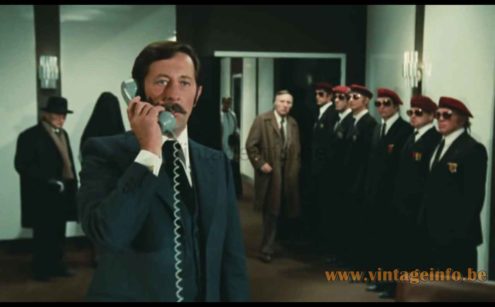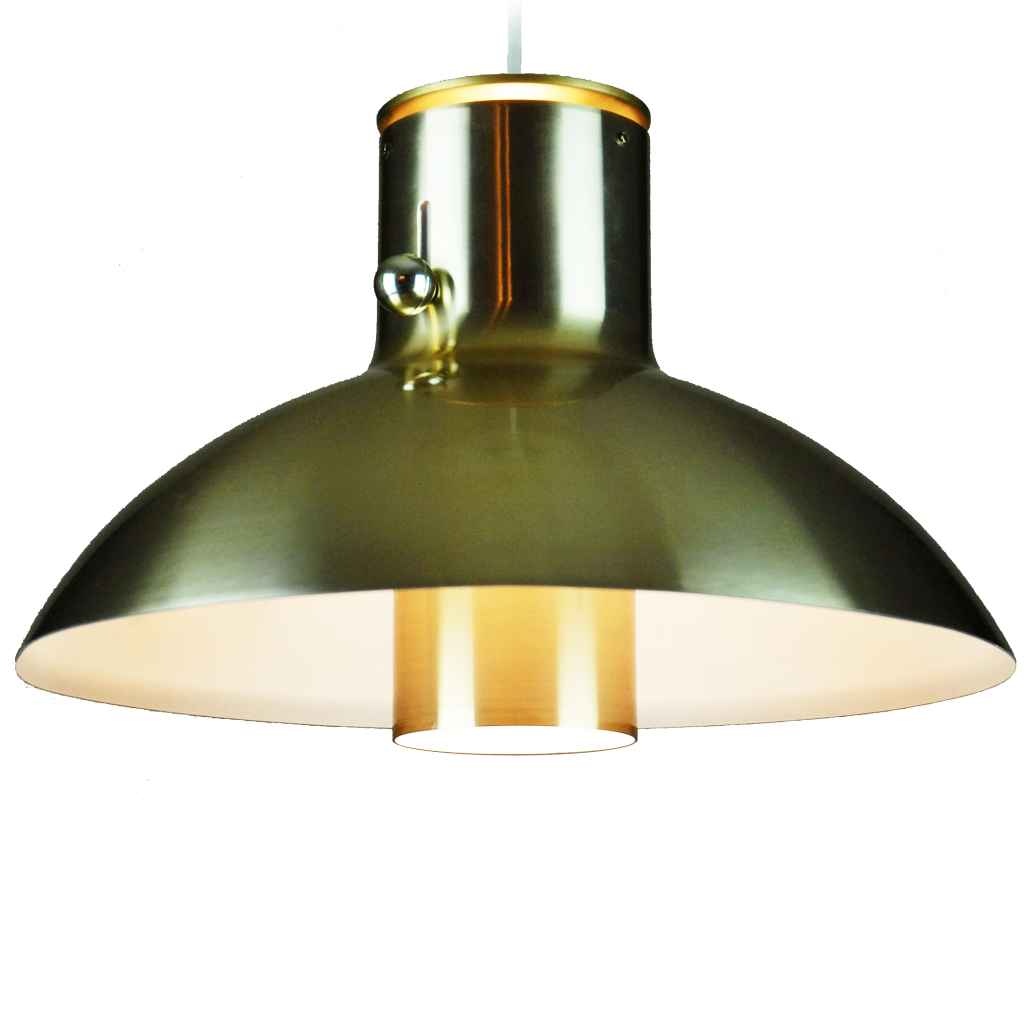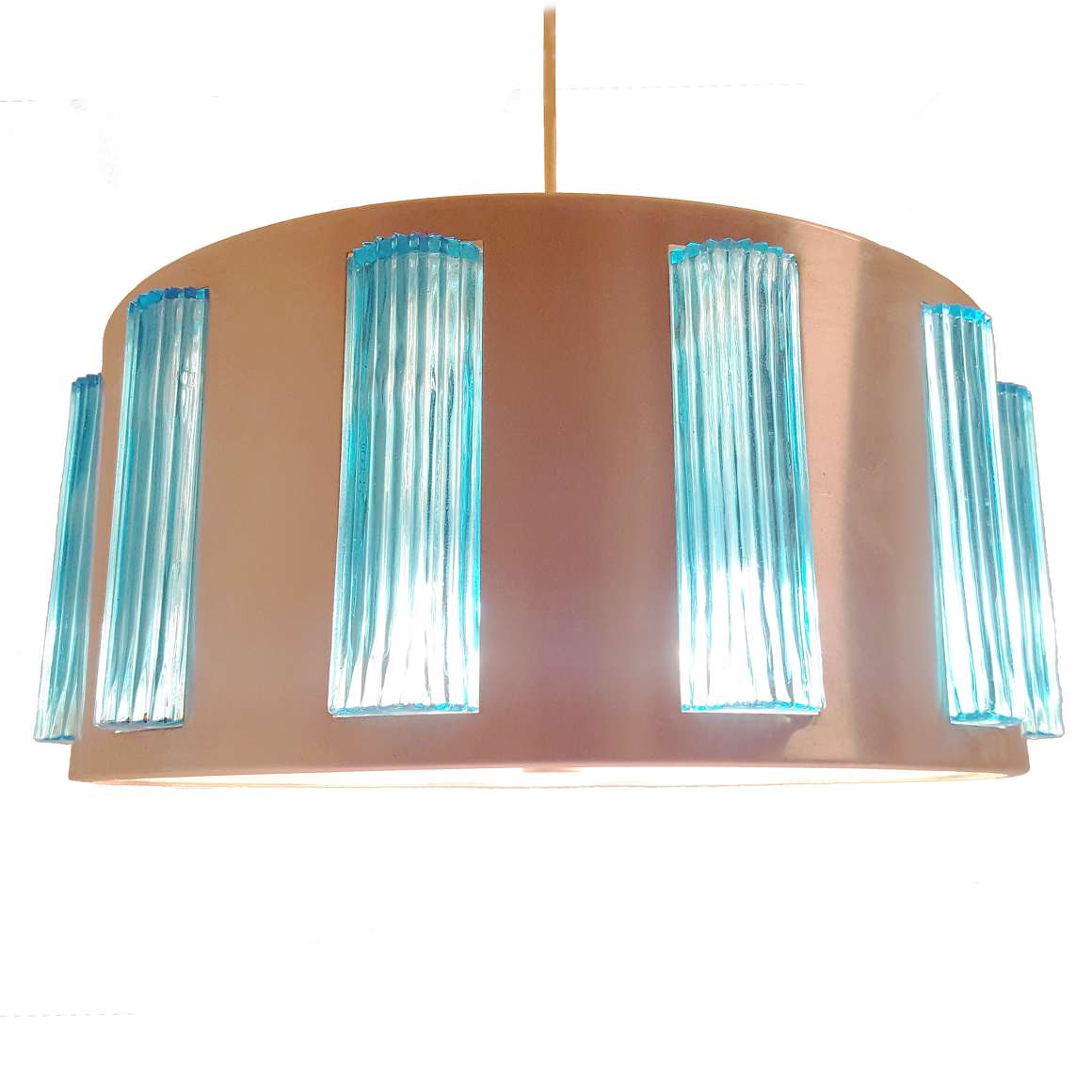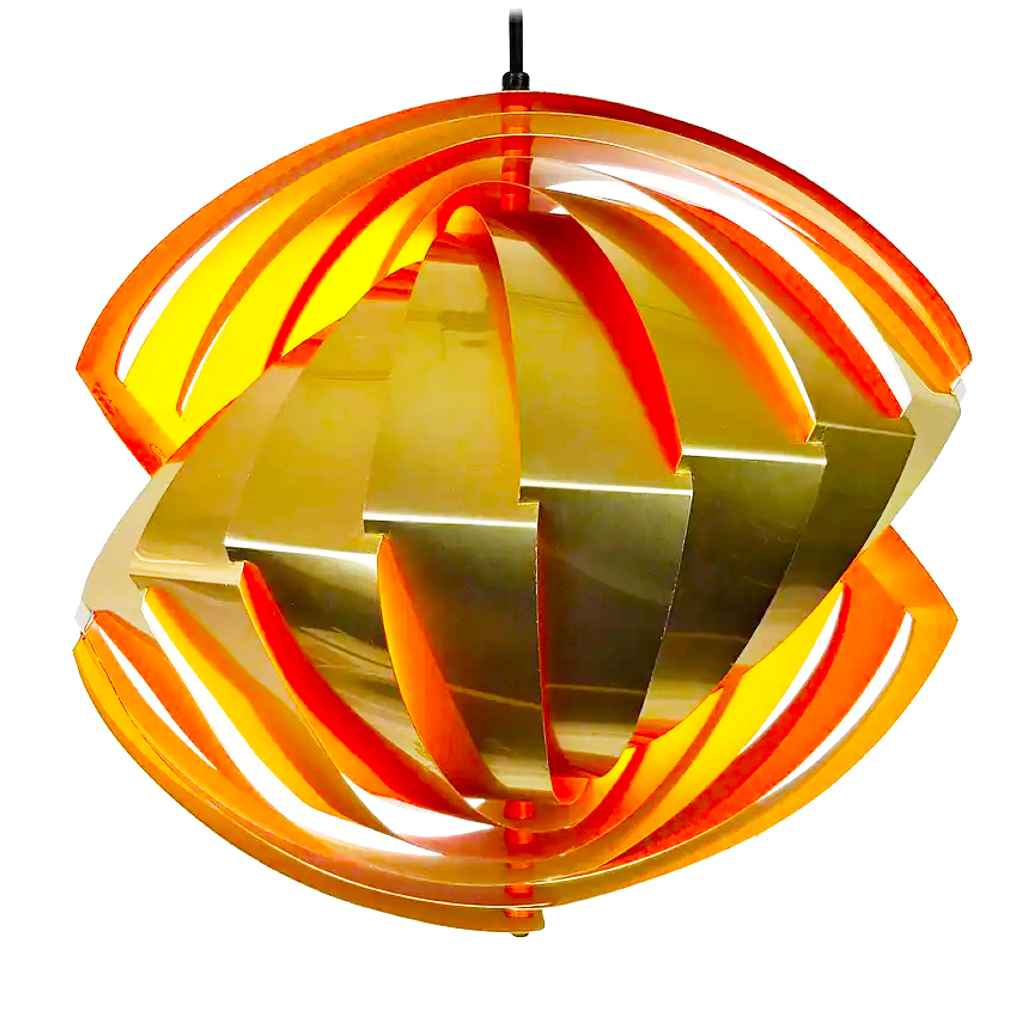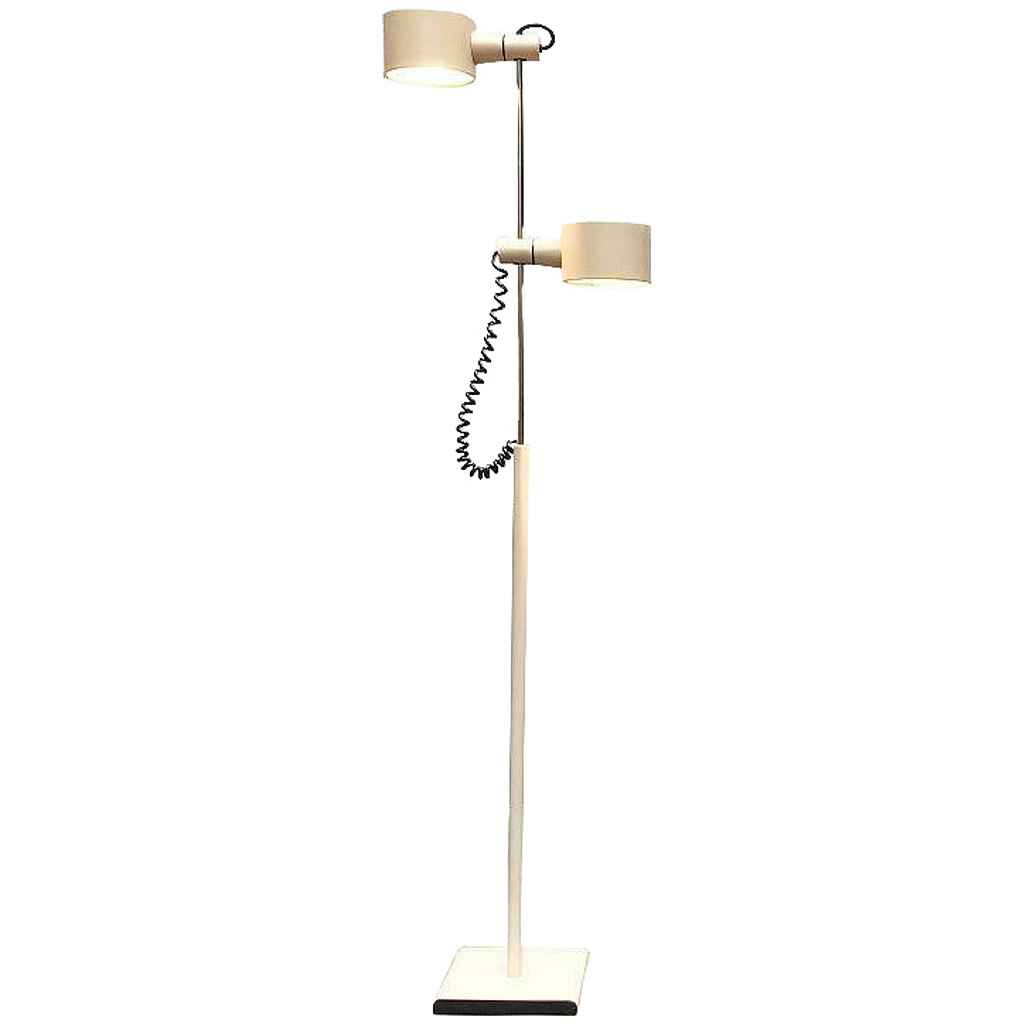Lamps In The Movies
Pan wall lamps were used as a set decoration in the 1974 French comedy film Le Retour du Grand Blond (The Return of the Tall Blond Man with One Black Shoe). Starring Pierre Richard, Jean Carmet and Jean Rochefort (on the phone in this scene).
Gheorghe Zamfir – Le Retour Du Grand Blond theme – Sapato Rosa
Lyfa Pan-Opticon Wall Lamp
Materials: Long brushed aluminium tubular lampshade, painted yellow inside. 2 Bakelite E14 sockets.
Height: 60 cm / 23.62”
Width: 5 cm / 1.96”
Depth: 8 cm / 3.14”
Electricity: 2bulbs E14, 2 x 40 watt maximum, 110/220 volt.
Anytypeof light bulb canbeused, not a specific one preferred.
Period: 1970s – Mid-Century Modern.
Designers: Bent Karlby in 1970.
Manufacturer: Lyfa, Ryesgade 28, 2tv, 8000 Aarhus C, Denmark.
Other versions: This Lyfa Pan-Opticon wall lamp exists in blue, red and yellow. The short but wider version is named Pandean. And the pendant lamp is named Pantre. Another wall lamp with several lamps together and more rounded holes is named Pan. All refering to the Pan flute.
In 1972 the Pan flute became popular because of the music by the Romanian artist Vladimir Cosma and played by Gheorghe Zamfir in the French movie Le Grand Blond Avec Une Chaussure Noire (The Tall Blond Man with One Black Shoe), starring Pierre Richard.
In the sequel of this film, Le Retour du Grand Blond (The Return of the Tall Blond Man with One Black Shoe) from 1974, Pan wall lamps were used as a set decoration. The maker is unknown, but they are very similar with the Pan pendant lamp by Bent Karlby. Maybe they were made for the film.
These wall lamps are reminiscent to the Fuga wall lamps designed by Maija Liisa Komulainen in the 1950s for the Dutch Raak company. Several other companies produced similar lamps in the 60s and 70s.
Lyfa
Lyfa was founded in 1924 under the name of Københavns Lampe Og Lysekronefabrik (Copenhagen Lamp And Chandelier Factory).
In 1930 the company was renamed into Lyfaca. They began producing table lamps inspired by the PH lights designed by Poul Henningsen for Louis Poulsen & CO A/S. After the Second World War the company collaborated with leading architects and designers to produce minimalist and sculptural Space Age lights. The company received numerous awards.
Designers that worked for the company are: Louis Weisdorf, Bent Karlby, Michael Andersen, Acton Bjørn, Claus Bonderup, Piet Hein, Klaus Helweg-Larsen, Simon Henningsen, Finn Juhl, Nils Koppel, Eva Koppel and of course Carl Fagerlund via Orrefors.
In the late 1970s Lyfa merged with Fog & Mørup, another leading Danish lighting producer. In the 1980s Lyfa-Fog & Mørup was taken over by Lyskær. The name changed to Lyskaer-Lyfa.
Lyskaer-Lyfa
Lyskaer-Lyfa produced lamps until 1991 when it was incorporated into Horn Belysning A/S of Aalstrup. Horn itself was taken over in 2005 by Nordlux of Ålborg and at a large extent dismantled. Today the Lyfa company has revived and they sell some of their old icons.
Links (external links open in a new window)
Le Grand Blond Avec Une Chaussure Noire – Wikipedia
Le Grand Blond Avec Une Chaussure Noire – IMDb
Le Retour du Grand Blond – Wikipedia
Le Retour du Grand Blond – IMDb
Pandean, Pan-Opticon, Pantre lamps catalogue pictures – Danish-lights.com
New Pan pendant lamp – Lyfa website
Vintageinfo
Bent Karlby Ergo pendant lamp – ASK Belysninger
Pan style lamps
Many thanks to Christian for the beautiful pictures. You can find his shop over here on Ebay.
